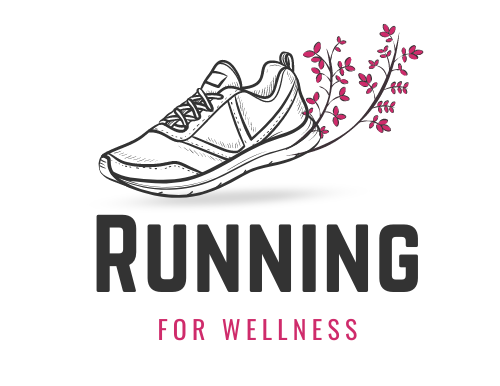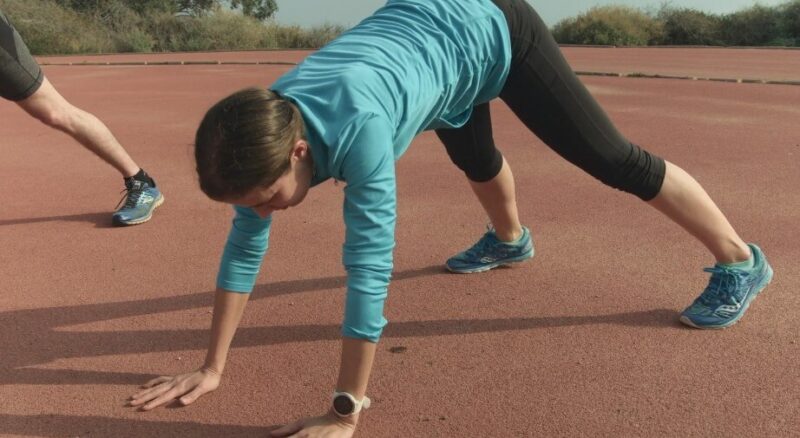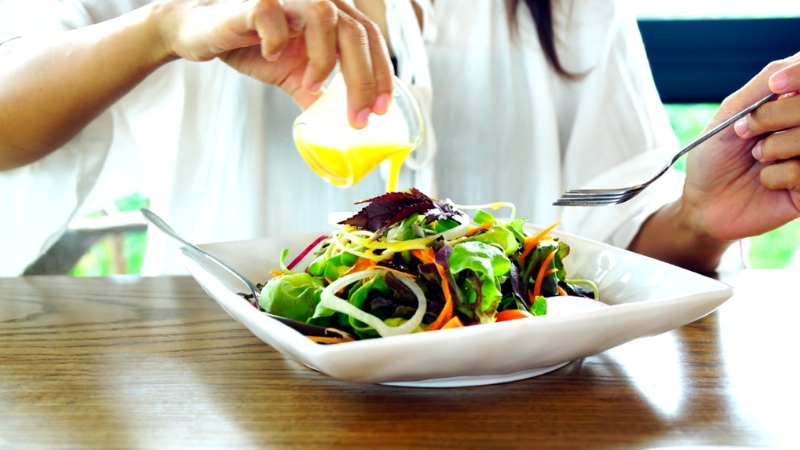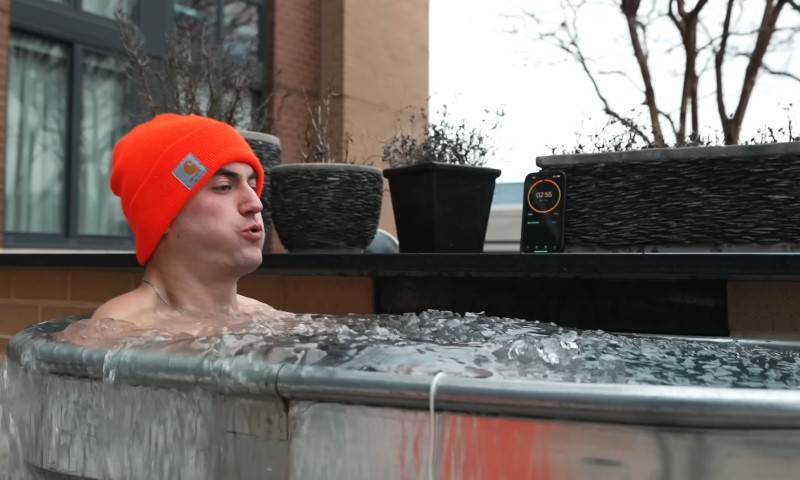Crossing the finish line might mark the end of your race, but what you do in the hours and days afterward plays a huge role in how your body feels—and performs—next time. One of the most common complaints after races, whether it’s a 5K or a full marathon, is tightness in the hips, calves, hamstrings, and lower back. This stiffness can limit range of motion, increase the risk of injury, and make your next training block miserable if you don’t address it correctly.
Here’s the concrete answer: You can dramatically reduce post-race tightness and improve long-term flexibility by combining targeted stretching, strategic movement, hydration, myofascial release, and recovery-enhancing tools like heat and supplementation. Flexibility is not just about static stretching—it’s about restoring the muscles’ ability to move freely, absorb load, and return to their natural resting length after they’ve been under race stress.
Table of Contents
ToggleKeep Moving: Active Recovery Instead of Full Rest
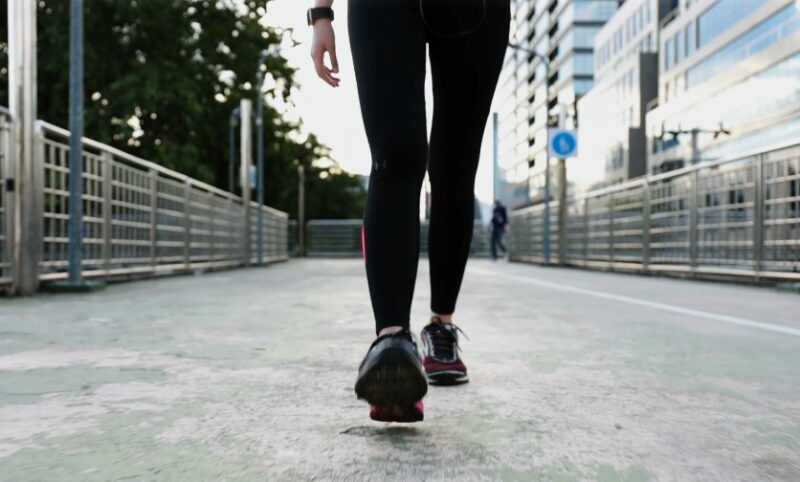
The temptation to collapse after finishing a race is strong. But sitting down too soon after a high-output effort is one of the most common causes of next-day stiffness. Your muscles are flooded with metabolic waste from sustained contraction, and that junk needs to be flushed out.
Gentle movement—like walking for 15–20 minutes, hopping on a stationary bike, or doing slow laps around the track—keeps blood and lymph fluid circulating.
This light activity lowers inflammation and maintains mobility in your joints. If you go straight from the finish line to the couch, you’re more likely to stiffen up by nightfall, especially in the calves and hips. Treat the finish line as the beginning of your recovery routine, not the end.
Hydrate and Replenish Electrolytes to Restore Muscle Balance
Most runners know hydration matters, but not everyone connects it to flexibility. When you sweat, you’re losing more than water—you’re losing electrolytes that control how your muscles contract and relax.
Without enough sodium, potassium, and magnesium, your muscle fibers stay partially contracted, and that lingering contraction is what makes your muscles feel stiff and unresponsive. If you’re tight after a race, it could be dehydration talking. You need to rehydrate quickly and correctly—not just with water, but with balanced fluids that restore minerals.
Estimated electrolyte losses per hour of moderate to high-intensity running:
| Sweat Rate | Sodium (mg/hr) | Potassium (mg/hr) | Magnesium (mg/hr) |
| Moderate Sweater | 800–1200 | 200–400 | 15–25 |
| Heavy Sweater | 1500–2000+ | 300–600+ | 25–50 |
To keep muscle tone healthy and flexible, aim to drink 500–1000 ml of water with electrolytes in the first 1–2 hours post-race. Add magnesium-rich foods (dark leafy greens, pumpkin seeds, bananas) to your recovery meal, or use a magnesium supplement (200–400 mg) before bed to help muscles fully relax.
Use Dynamic Stretching First, Not Static
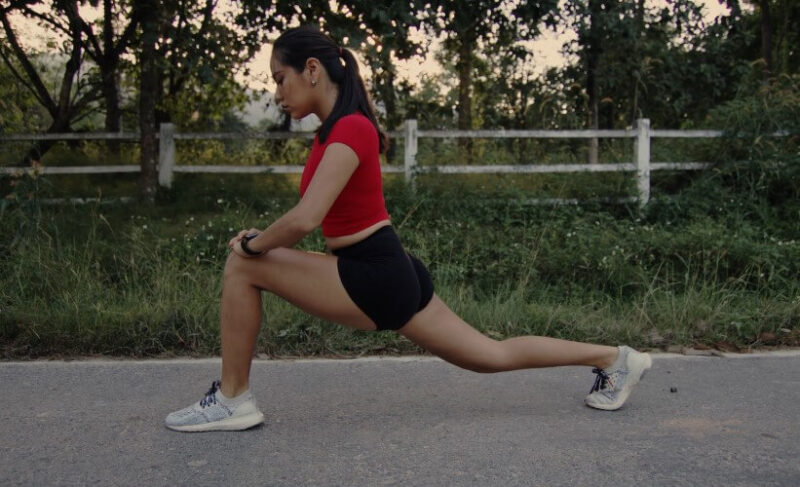
Static stretching immediately after a race can feel painful, ineffective, or both. That’s because your muscles are still neurologically “switched on”—contracted and tight from miles of repetitive movement. A better approach is dynamic stretching, which encourages muscle groups to move through their natural range without holding uncomfortable positions. This signals your nervous system to reset and gradually unlocks tension without stress.
Instead of diving into deep hamstring holds, try:
- Leg swings (front/back and side-to-side): 10–15 reps per leg
- Hip circles and figure-8s: Great for joint lubrication
- Walking lunges with arms overhead: Stretches the whole chain
- Ankle rolls and toe raises: Especially helpful if calves are tight
This kind of movement takes just 10–15 minutes and lays the groundwork for deeper stretching later in the day, when it will help.
Add Heat to Enhance Mobility and Ease Tension
Muscles don’t stretch well when they’re cold and fatigued. That’s why adding heat is a game-changer for improving flexibility after a race. Applying heat increases blood flow, reduces inflammation, and allows tissue to stretch more easily. Warm showers, hot compresses, or even a simple bath can help, but when you want a full-body effect, indoor saunas are perfect. They not only raise your core temperature but also help loosen fascia (the connective tissue that can restrict movement when inflamed).
Research shows that pairing heat with stretching can increase flexibility by up to 20% compared to stretching alone. Just 15–20 minutes in a sauna post-race, followed by light movement and a few long-held stretches, can dramatically reduce tightness in the hips, hamstrings, and lower back.
Foam Rolling and Self-Massage: Mobilize the Fascia
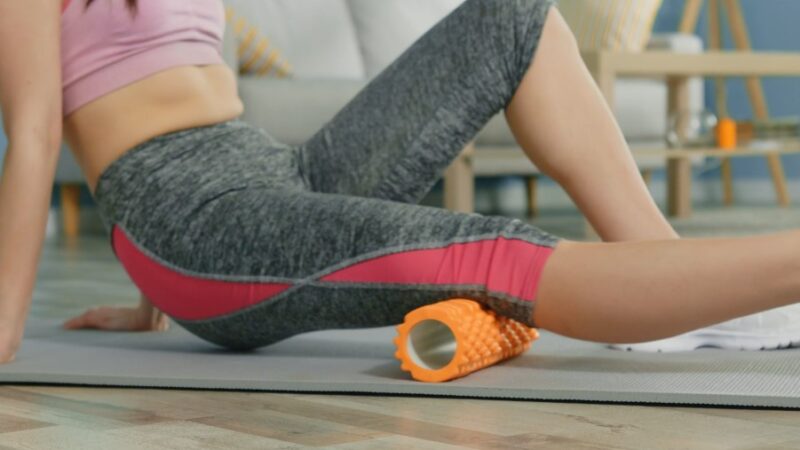
Post-race soreness is often blamed on the muscles, but it’s frequently the fascia, your connective tissue network, that gets stiff and dehydrated. Foam rolling, massage balls, and even massage guns can help rehydrate this tissue and break up adhesions that form from repetitive impact. The key is to go slow and breathe through the process. You don’t want to “brute force” your way into recovery—rolling should not feel like punishment.
Focus on:
- Calves and Achilles: Especially if running on pavement
- Quadriceps and IT bands: Use long, sweeping strokes
- Glutes and piriformis: Use a tennis ball or massage ball
- Back and lats: Often overlooked, but crucial for posture
Spend 30–60 seconds per muscle group and don’t overdo it. If something feels like sharp pain, back off. Foam rolling should relieve tension, not create more.
Static Stretching Works—When You’re Ready
Static stretching has its place, but only once your tissues are warm and receptive. If you’re already hydrated, have done dynamic movement, and maybe applied some heat or massage, now’s the time to go deeper. Hold each stretch for 30–60 seconds, breathe through the position, and avoid bouncing. You’re looking for a slow, controlled lengthening, not a forced pull.
Priority areas after racing:
- Hip flexors: From all that forward motion and sitting post-race
- Hamstrings: Shortened and overworked from repetitive stride cycles
- Calves and soles of the feet: A hotspot for tension after long runs
- Glutes and piriformis: Key for hip rotation and low back comfort
Don’t rush. Stretching should feel like a release, not a chore.
Support Recovery With Targeted Nutrition
Your flexibility depends just as much on what you put in your body as how you move it. Inflammation, nutrient depletion, and muscle fatigue can all restrict your range of motion. That’s why recovery nutrition should include anti-inflammatory foods and supplements that reduce stiffness and speed up tissue repair.
Here’s what works best after races:
- Omega-3s (from fish oil): 2000–3000 mg EPA/DHA per day
- Curcumin (turmeric extract): 500–1000 mg, taken with black pepper
- Tart cherry juice or extract: 8–12 oz juice or 480 mg capsule
- Collagen + Vitamin C: Supports tendon, ligament, and fascia health
- Magnesium glycinate or citrate: 200–400 mg for muscle relaxation
These reduce joint pain, improve recovery quality, and help loosen muscle tissue that feels locked up after hard effort.
Sleep and Breathing: Unlock Deep Recovery
Recovery is not just physical—it’s neurological. After a race, your nervous system is still buzzing. Deep sleep and breathwork help turn off the stress response and activate the parasympathetic system, which allows your muscles to relax and recover. If you’re sleeping poorly, your body won’t produce enough growth hormone, which is essential for muscle repair and tissue regeneration. Poor sleep also keeps cortisol levels high, which locks your muscles in a semi-contracted state.
Prioritize:
- 7–9 hours of sleep, ideally with a consistent bedtime
- A dark, cool room and limited screen exposure before sleep
- 5–10 minutes of diaphragmatic breathing during post-race stretches or before bed
These little changes calm your system and create the internal environment where real flexibility gains happen.
Make Mobility a Weekly Habit, Not Just Post-Race
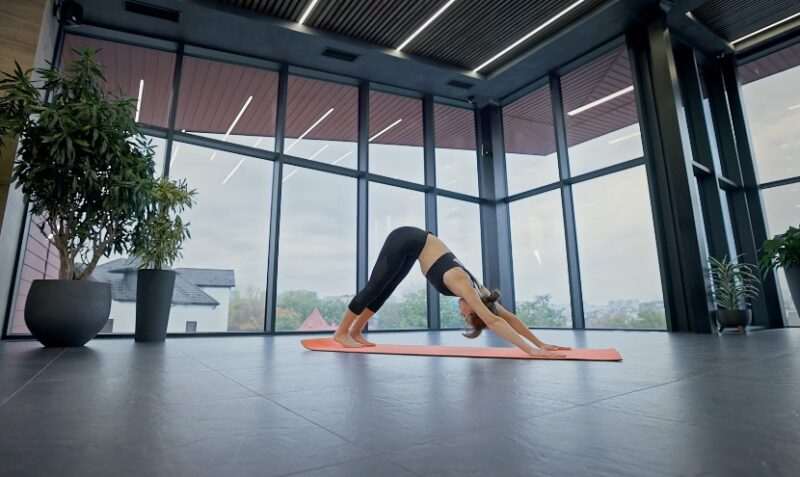
Flexibility isn’t something you get from a single post-race routine—it’s a habit. If you only stretch when you feel tight, you’re always chasing your tail. Instead, carve out two to three 20-minute sessions per week focused solely on mobility. That could mean yoga, mobility circuits, or resistance band work. Consistent low-stress movement trains your joints and connective tissue to stay fluid and adaptable.
Include movements like:
- Pigeon pose: Opens glutes and hips
- Lizard lunge: Great for hip flexors and groin
- Downward dog: Stretches hamstrings, calves, and shoulders
- Thoracic spine rotations: Improves posture and back flexibility
This is how you maintain and build flexibility between races—so that when race day comes again, your body feels like it’s working with you, not against you.
Use Smart Supplements and Tools to Stay Loose
View this post on Instagram
A post shared by Jonah Rosner | Elite Running Scientist (@rosnerperformance)
Sometimes your body needs more support than food and movement alone can provide, especially after long races or peak training blocks. Collagen peptides, L-glutamine, magnesium sprays, and compression tools all help support tissue repair, reduce inflammation, and keep muscles supple. These aren’t shortcuts—they’re add-ons to a recovery routine that’s already solid. When used consistently, they help your muscles bounce back faster and reduce long-term tightness.
For example:
- Collagen (10–15g) with vitamin C before movement stimulates tendon healing
- L-glutamine (5g) supports gut health and muscle recovery
- Topical magnesium spray helps localized muscle relaxation
- Compression sleeves or recovery boots assist with fluid drainage and circulation
Use what fits your lifestyle, but the goal is always the same: help your body do what it’s trying to do naturally—heal, restore, and move freely.
Final Thoughts
The stiffness you feel after a race isn’t a flaw—it’s feedback. It tells you which muscles are overworked, under-recovered, or stuck in survival mode. Learning to read that message and respond with care, movement, and nourishment is what separates runners who bounce back quickly from those who fall into injury cycles. You don’t have to be a yoga master to feel fluid after a ra, e—but you do have to show up for your body in the right ways. Hydrate smart. Move gently. Use heat and stretch when the timing is right. And remember—recovery is training, too.
Related Posts:
- Top 400 Hilarious Gym Quotes to Keep You Motivated
- How Long Does It Take to Train for a Half Marathon?
- 25 Simple Running Motivation Tips To Get You Moving
- How Far Is a Half Marathon? Everything You Need to Know
- How Can You Start a Career as a Running Coach?
- Half Marathon Training Plan for Beginners - Simple…
